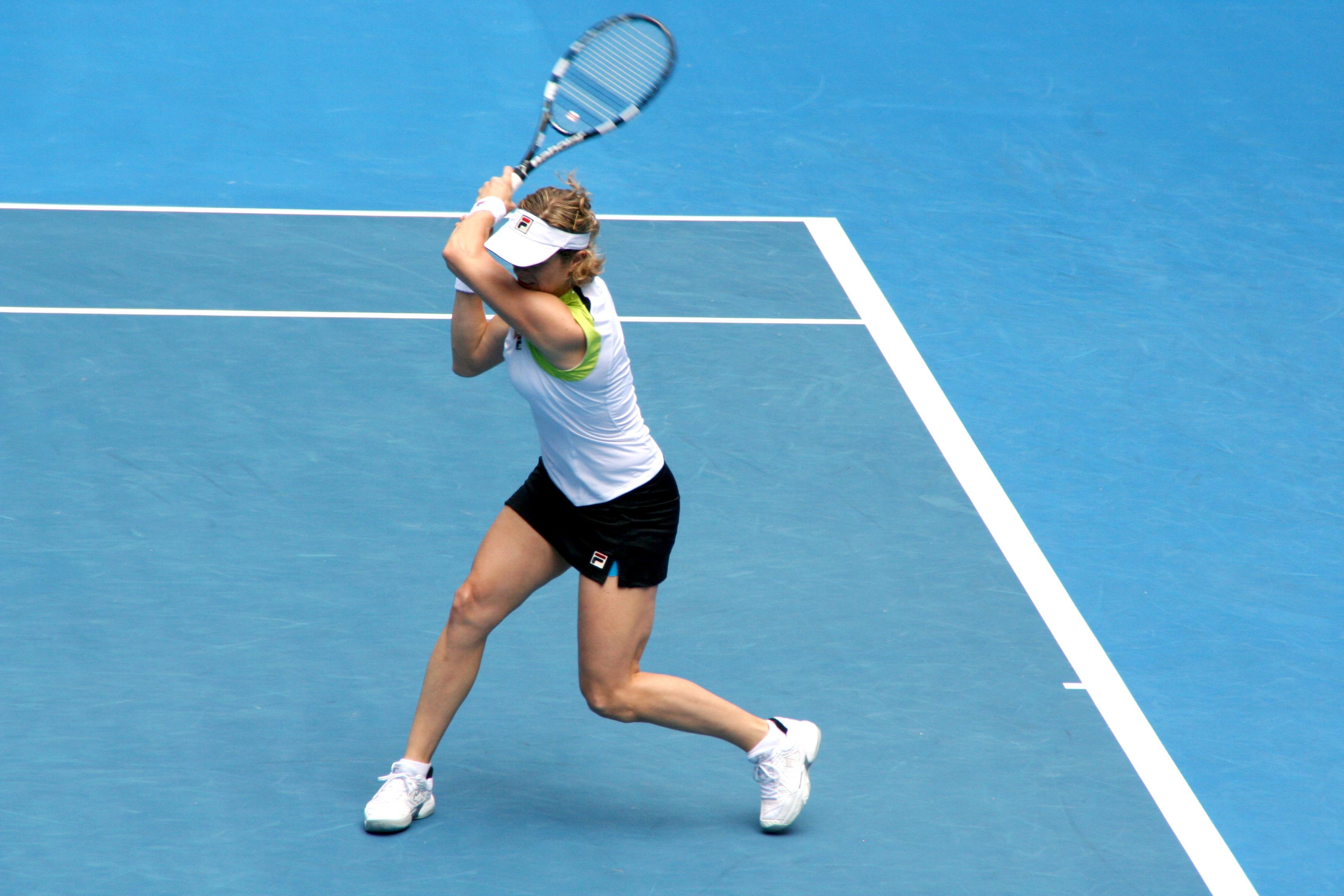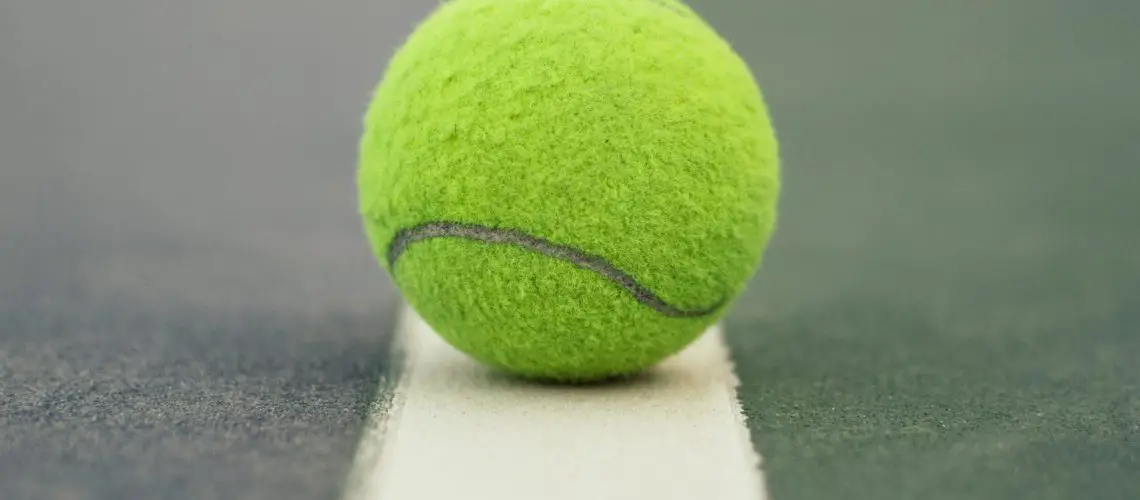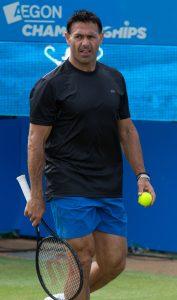We may earn money or products from the companies mentioned in this post.
Introduction to the Baseline in Tennis

When it comes to playing tennis, the baseline is a crucial element of the game It is the boundary line that runs parallel to the net and divides the court into two halves Understanding the significance of the baseline and how it affects gameplay and strategy can greatly enhance a player’s performance on the court
Definition of Baseline and its Importance
The baseline is essentially the foundation of a tennis court It marks the outermost boundary and serves as a reference point for players during rallies Players start each point from behind their respective baselines, aiming to hit shots that fall within their opponent’s baseline or force them to make errors
The importance of the baseline lies in its role as both a defensive position and an offensive launching pad From here, players have optimal positioning to retrieve shots from their opponents while also having enough space to generate power and control in their own shots
The Impact on Gameplay and Strategy
The position of players relative to the baseline significantly impacts gameplay dynamics and strategic decision-making on the court
For defensive purposes, staying close to or just behind the baseline allows players to quickly react to incoming shots with greater efficiency This positioning enables them to cover more ground effectively, making it harder for opponents to hit winners past them
On the other hand, stepping inside or aggressively moving closer towards their opponent’s side of the court can put pressure on them by limiting their time and options when returning shots This offensive approach often results in shorter reaction times for opponents, increasing their chances of making mistakes under pressure
The distance from one’s own baseline also affects shot selection during rallies Shots hit from deeper positions allow players more time for preparation but may sacrifice angles or aggressiveness compared to shots hit closer to the net
Conversely, shots hit from inside or just behind the baseline can be more aggressive and offensive, but they require precise timing and footwork to maintain control Choosing the right balance between defensive and offensive positioning is a strategic decision that players constantly evaluate throughout a match
In conclusion, understanding the importance of the baseline in tennis is essential for players looking to improve their game By recognizing its role as both a defensive position and an offensive launching pad, players can strategically position themselves on the court to maximize their chances of success Mastering this fundamental aspect of tennis will undoubtedly contribute to overall performance and enhance gameplay dynamics
The Role of the Baseline in Tennis Gameplay

When it comes to tennis, the baseline is a critical area for players to master How they position themselves on and around the baseline can greatly impact their gameplay and overall performance Let’s explore the different approaches players take when it comes to positioning themselves on the court
Defensive Play from Behind the Baseline
Playing defensively from behind the baseline has its advantages It allows players to have more time to react and retrieve shots, giving them a better chance of staying in long rallies This style of play requires excellent footwork, agility, and anticipation skills Some famous players who excel at defensive play from behind the baseline include Rafael Nadal and Novak Djokovic, both known for their incredible defense and ability to extend points
Aggressive Play on or Inside the Baseline
On the other hand, aggressive play on or inside the baseline allows players to take control of points by dictating play By positioning themselves closer to or inside the baseline, they put pressure on their opponents with powerful shots and strategic shot placement This style of play requires quick reflexes, timing, and offensive shot-making abilities Players like Roger Federer and Serena Williams are masters at aggressive play on or inside the baseline
Different Styles of Shots Executed Near or on The Baseline
Groundstrokes
Groundstrokes are fundamental shots executed near or on the baseline that require precision and technique When it comes to forehand groundstroke technique, players focus on generating power through proper body rotation while maintaining balance Footwork plays a crucial role in positioning oneself for optimal shot execution
The backhand groundstroke technique involves using both hands (two-handed backhand) or a single hand (one-handed backhand) to generate power and control Footwork is crucial here as well, allowing players to position themselves effectively and maintain stability during the shot
Approach Shots
Approach shots are shots executed near the baseline with the intention of moving forward and approaching the net Different types of approach shots can be used, such as slices or topspin shots, depending on the player’s style and preference These shots are strategically employed to set up an opportunity for a winning volley or a passing shot
Selecting an effective approach shot requires careful consideration of factors such as court positioning, opponent’s playing style, and personal strengths Players often employ various strategies to ensure their approach shots put them in the best possible position to dominate points
By understanding the role of the baseline in tennis gameplay and mastering different styles of shots executed near or on it, players can enhance their overall performance on the court Whether adopting a defensive approach from behind the baseline or opting for aggressive play closer to it, strategic positioning and shot selection are key elements that contribute to success in this dynamic sport
Tactics and Strategies Involving the Baseline

How to read opponents’ positioning and tendencies when they are near or on their own baselines
When facing opponents who are near or on their own baselines, it is crucial to develop the skill of reading their positioning and tendencies By observing patterns in their movement, shot selection, and court coverage, you can gain valuable insights into their game
Recognizing these patterns can give you a strategic advantage For example, if you notice that your opponent consistently moves towards one side of the court after hitting a specific shot, you can exploit this weakness by hitting cross-court shots to the opposite side or down-the-line shots that catch them off guard
Additionally, identifying potential weaknesses in your opponent’s game is essential Look for opportunities where you can place well-placed lobs over their heads or execute cross-court shots that exploit gaps in their court coverage These tactics can put pressure on your opponent and force them out of their comfort zone
Adapting your game plan based on your own strengths relative to those observed weaknesses
Once you have recognized your opponent’s weaknesses, it’s time to adapt your game plan accordingly Assessing your own strengths relative to those observed weaknesses will help determine the best strategy for success
In choosing appropriate targets along your opponent’s side of the court, consider where they struggle the most based on previous observations Are they slow to react to shots hit deep into one corner? Or do they struggle with high balls over their head? By selecting appropriate targets, you can maximize your chances of winning points
Furthermore, deciding between offensive (pressure) plays versus more conservative counterpunching tactics depends on how well you match up against your opponent’s weaknesses If you have a powerful forehand, for example, utilizing offensive plays that put pressure on your opponent’s weaknesses may be the way to go On the other hand, if your opponent’s weaknesses align with your counterpunching abilities, adopting more conservative tactics might give you a higher chance of success
Improving Your Game by Mastering Baseline Play

Practice tips for honing your baseline skills
When it comes to improving your baseline play, practice is essential One effective method is incorporating practice drills into your training routine These drills focus on enhancing your groundstrokes, footwork, and court positioning By repeating these exercises regularly, you can develop muscle memory and improve your overall technique
Additionally, working with a coach or partner to simulate match conditions can be highly beneficial Engaging in practice sessions where you play points out from the baseline will help you become more comfortable and confident in real match situations
Mental aspects of successful baseline play
Mastery of the baseline game isn’t just about physical skills; it also requires mental fortitude Developing patience and consistency during long rallies is key to maintaining control over the point This means staying focused and not rushing shots or making impulsive decisions that could give your opponent an advantage
Furthermore, maintaining focus on shot selection and execution under pressure is crucial As matches intensify, the ability to make smart decisions quickly becomes paramount Keeping a clear mind and executing each shot with precision can make all the difference in winning those critical points
Using video analysis to study professional players who excel at baseline play
In today’s digital age, we have access to a wealth of tennis footage featuring top professionals who excel at baseline play Take advantage of this resource by studying their techniques closely Observing how they handle different situations can provide valuable insights into improving your own game
Analyze their footwork, timing, shot selection, and court positioning—pay attention to every detail that contributes to their success as baseliners By identifying common patterns that emerge among these top players in terms of strategy and tactics, you can incorporate these elements into your own game to elevate your performance
Useful Links

What’s the point of playing behind the baseline in tennis?
Baseline
Baseline Tennis — serving up tennis for everyone
Adult Programming
Baseline Tennis Academy | San Gwann
History – Baseline Tennis Center
Optimal Tennis Baseline Position And Movement
Advice for defeating a baseline attacker
How to Become a Tennis Baseliner
Baseline Tennis Tote
Baseline Tennis Center (@baseline_tc) …
tennis-court-dimensions.pdf
10 Rules to Win More Baseline Exchanges
How to Play Baseline Tennis And Keep Opponents Running
Baseline: Tennis on the App Store
Baseline Sports Construction
INTENSITY FROM THE BASELINE 101






